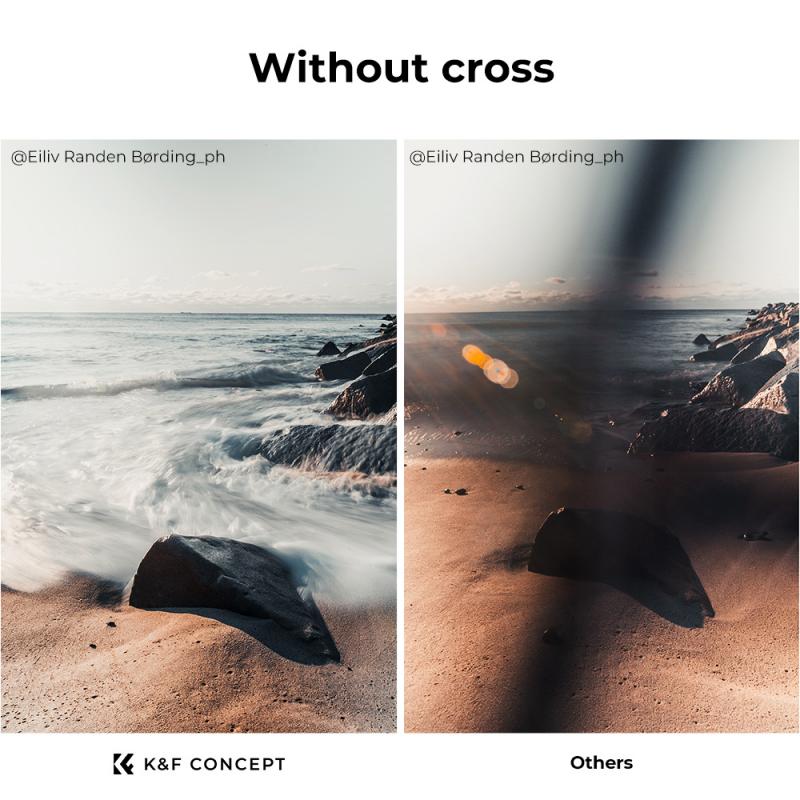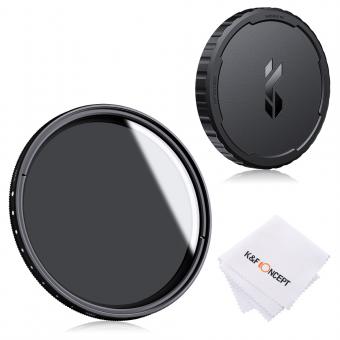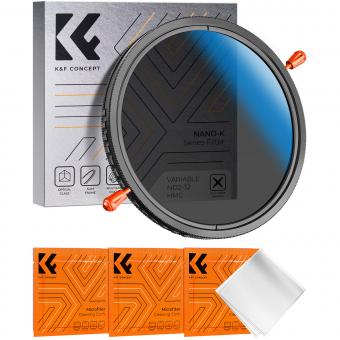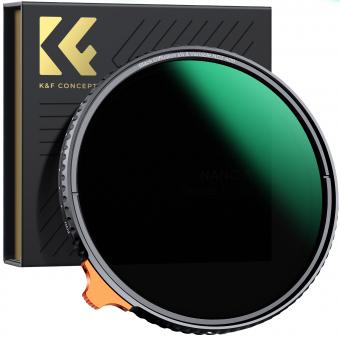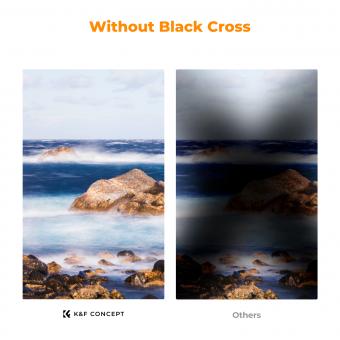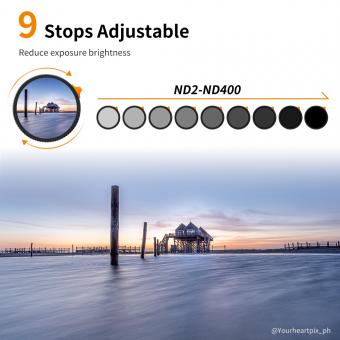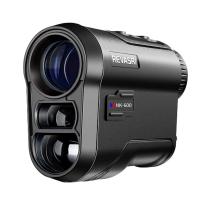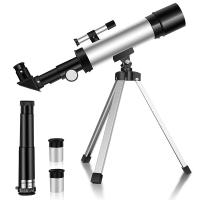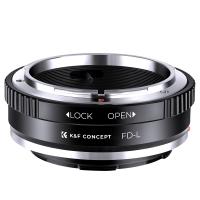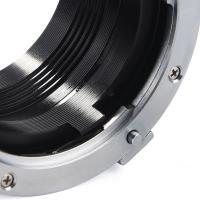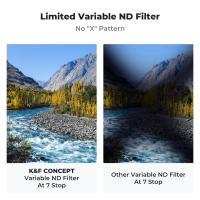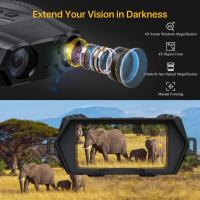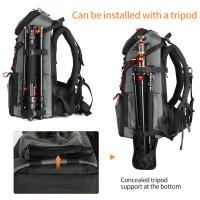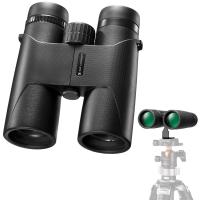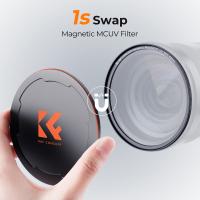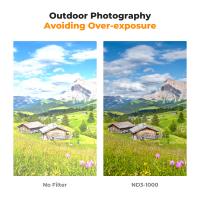Variable Nd Filter How Does It Work ?
A variable ND filter is a type of camera filter that allows you to adjust the amount of light entering the camera lens. It consists of two polarizing filters that can be rotated relative to each other, which changes the amount of light transmission. By rotating the filter, you can increase or decrease the intensity of light passing through the lens, effectively controlling the exposure. This is particularly useful in situations where you need to shoot in bright conditions or when you want to achieve long exposure effects, such as capturing motion blur in water or creating a shallow depth of field in bright light. The variable ND filter provides flexibility and convenience by eliminating the need to carry multiple fixed ND filters of different densities.
1、 Definition and Purpose of Variable ND Filters
A variable ND filter, also known as a variable neutral density filter, is a versatile tool used in photography and videography to control the amount of light entering the camera lens. It consists of two polarizing filters that can be rotated relative to each other, allowing the user to adjust the density of the filter and therefore control the amount of light that passes through.
The purpose of a variable ND filter is to achieve a desired exposure in situations where the available light is too bright. By reducing the amount of light entering the lens, it allows for longer exposure times or wider apertures, enabling creative effects such as motion blur or shallow depth of field. It is particularly useful in situations where using a fixed ND filter would require constantly changing filters to adapt to changing lighting conditions.
The way a variable ND filter works is by rotating the front filter relative to the back filter. As the filters are rotated, the amount of polarized light that is allowed to pass through changes, resulting in a variable density. This rotation can be done manually or with the help of a built-in mechanism.
It is important to note that variable ND filters have some limitations. They can introduce color shifts, especially at extreme densities, and may cause vignetting or image quality degradation. However, advancements in filter technology have led to the development of high-quality variable ND filters that minimize these issues.
In conclusion, a variable ND filter is a valuable tool for photographers and videographers, allowing them to have greater control over exposure in bright lighting conditions. It offers convenience and flexibility by eliminating the need for multiple fixed ND filters. However, it is essential to choose a high-quality filter to ensure minimal color shifts and image degradation.
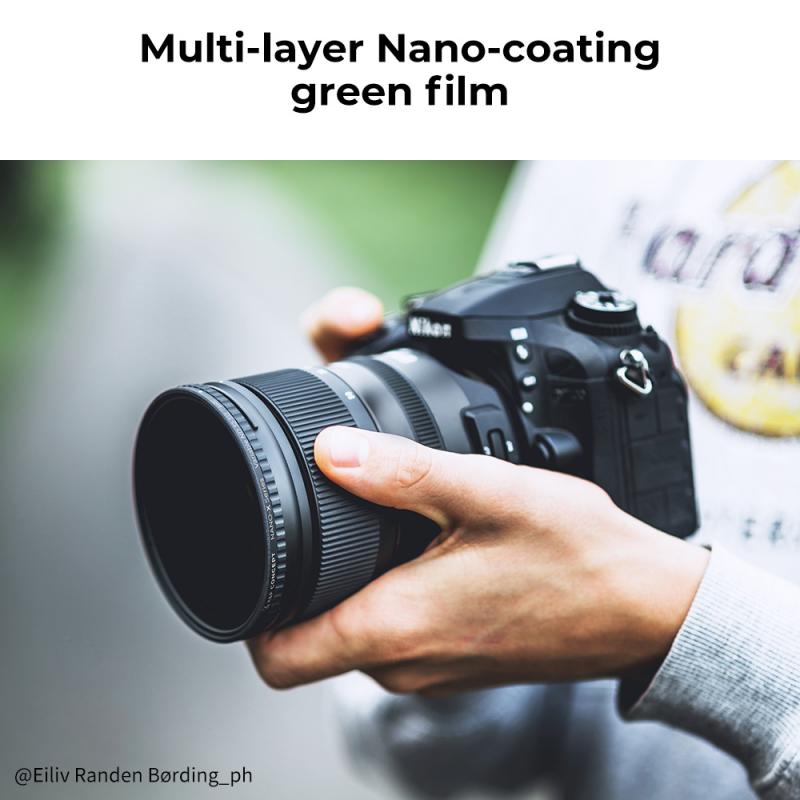
2、 Mechanism of Variable ND Filters
Variable ND filters work by using two polarizing filters that are stacked together and can be rotated relative to each other. The first filter is a linear polarizer, which blocks light waves that are vibrating in a specific direction. The second filter is a circular polarizer, which further blocks light waves that are vibrating in a specific direction and also helps to maintain the correct polarization of light entering the camera.
When the two filters are aligned, they allow maximum light transmission through the lens. As the front filter is rotated, it starts to block some of the light waves, reducing the amount of light that reaches the camera sensor. By rotating the front filter, the photographer can adjust the amount of light entering the camera, effectively controlling the exposure.
The mechanism of variable ND filters is based on the principle of polarization. When light passes through the filters, it becomes polarized in a specific direction. By rotating the filters, the photographer can control the orientation of the polarization and therefore control the amount of light that is allowed to pass through.
The latest point of view on variable ND filters is that they offer a convenient and versatile solution for photographers who need to adjust exposure settings quickly and easily. They are particularly useful in situations where the lighting conditions are constantly changing, such as outdoor photography or shooting in bright environments.
However, it is important to note that variable ND filters can introduce certain optical issues, such as color shifts and loss of image sharpness, especially when used at extreme settings. Therefore, it is recommended to use high-quality variable ND filters and to avoid using them at their maximum or minimum settings whenever possible.
In conclusion, variable ND filters work by using two polarizing filters that can be rotated relative to each other to control the amount of light entering the camera. They offer a convenient solution for adjusting exposure settings in changing lighting conditions, but care should be taken to minimize potential optical issues.
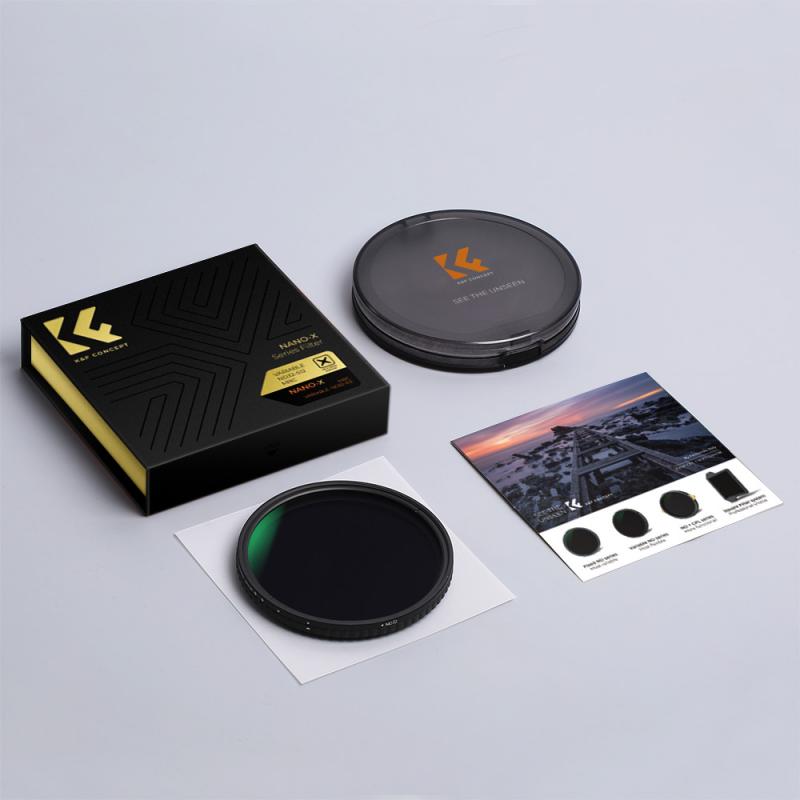
3、 Advantages and Disadvantages of Variable ND Filters
Variable ND filters are a popular tool among photographers and videographers for controlling the amount of light entering the camera. They consist of two polarizing filters that can be rotated to adjust the amount of light transmission. This allows for greater flexibility in controlling exposure and depth of field in various lighting conditions.
The main advantage of variable ND filters is their versatility. Unlike fixed ND filters, which have a set level of light reduction, variable ND filters offer a range of light reduction levels. This means that a single filter can be used in different lighting conditions without the need to carry multiple filters. It also allows for quick adjustments to exposure settings, especially in situations where lighting conditions change rapidly.
Another advantage is the ability to achieve shallow depth of field in bright conditions. By reducing the amount of light entering the camera, variable ND filters enable photographers to use wider apertures, resulting in a blurred background and a more aesthetically pleasing image.
However, variable ND filters also have some disadvantages. One common issue is the presence of a cross-like pattern, known as the "X effect," when using high light reduction settings. This occurs due to the interaction between the polarizing filters and can be particularly noticeable in wide-angle lenses. Some manufacturers have made improvements to reduce this effect, but it can still be a concern.
Another disadvantage is the potential for color shifts and loss of image quality. Variable ND filters can introduce color casts or reduce sharpness, especially when using extreme light reduction settings. However, advancements in filter technology have minimized these issues, and high-quality filters tend to have minimal impact on image quality.
In conclusion, variable ND filters offer great flexibility and convenience in controlling exposure and depth of field. However, photographers should be aware of potential issues such as the "X effect" and color shifts. It is important to invest in high-quality filters and test them in different lighting conditions to ensure optimal performance.
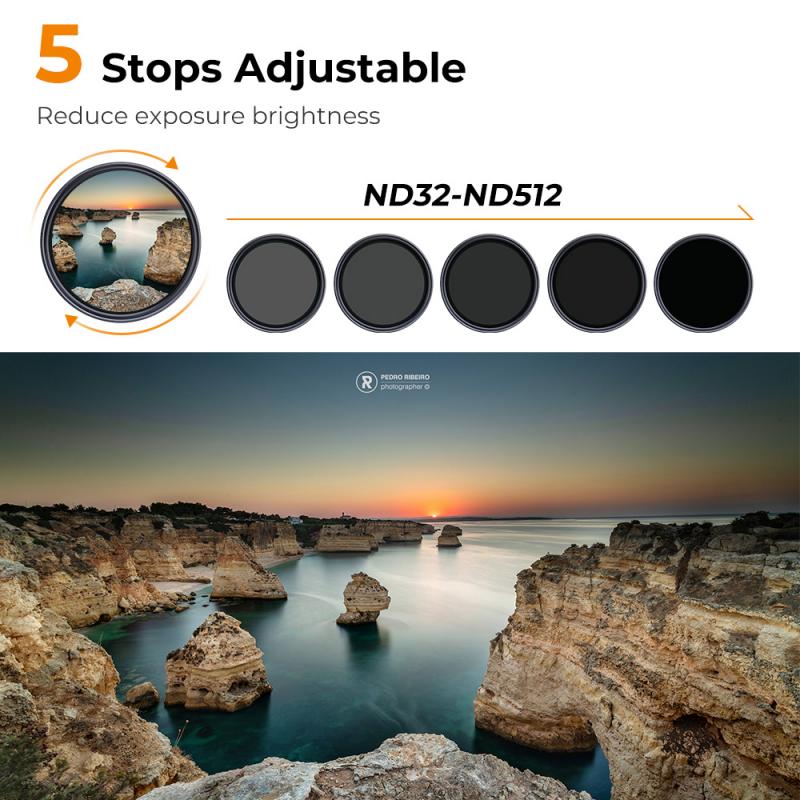
4、 Choosing the Right Variable ND Filter for Your Needs
A variable ND filter is a versatile tool that allows photographers and videographers to control the amount of light entering the camera lens. It consists of two polarizing filters that can be rotated to adjust the intensity of light passing through them. By rotating the front filter, the photographer can darken or lighten the image without changing the aperture or shutter speed settings.
The way a variable ND filter works is by reducing the amount of light that reaches the camera sensor. When the two polarizing filters are aligned, they allow maximum light transmission. As the front filter is rotated, it starts to block some of the light, resulting in a darker image. The more the front filter is rotated, the darker the image becomes.
Choosing the right variable ND filter for your needs depends on several factors. The first consideration is the range of light reduction you require. Variable ND filters come in different densities, usually measured in stops. The higher the density, the more light it can block. It is important to choose a filter that can provide the desired light reduction without compromising image quality.
Another factor to consider is the quality of the filter. Cheaper filters may introduce color casts or reduce image sharpness. It is recommended to invest in a high-quality variable ND filter from a reputable brand to ensure optimal performance.
Lastly, the size of the filter should match the diameter of your camera lens. Variable ND filters come in various sizes, so it is essential to choose one that fits your lens correctly.
In recent years, there have been advancements in variable ND filter technology, with some filters offering improved color accuracy and reduced vignetting. These advancements have made variable ND filters even more popular among photographers and videographers.
In conclusion, a variable ND filter is a valuable tool for controlling light in photography and videography. By understanding how it works and considering factors such as density, quality, and size, photographers can choose the right variable ND filter to meet their specific needs.
